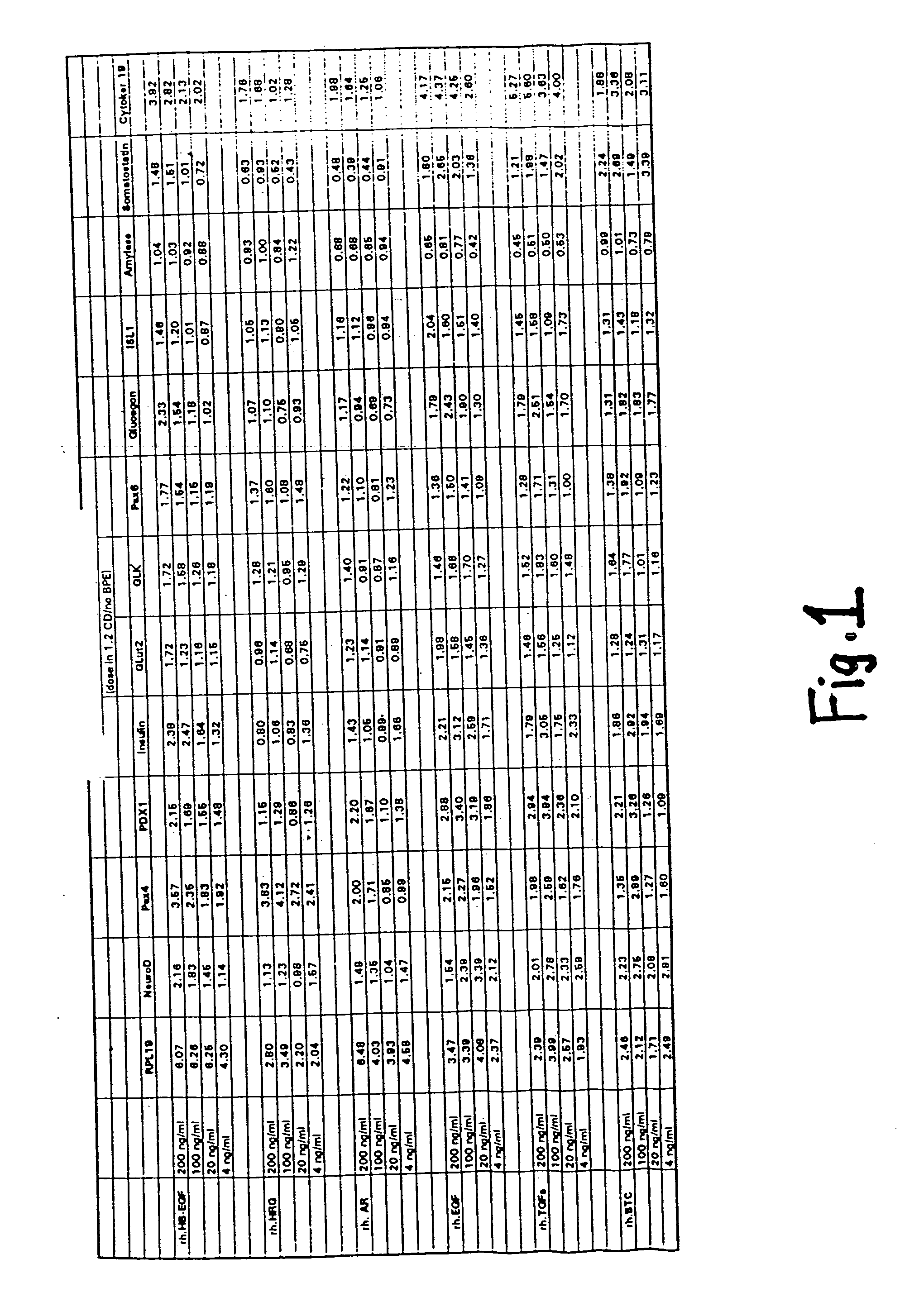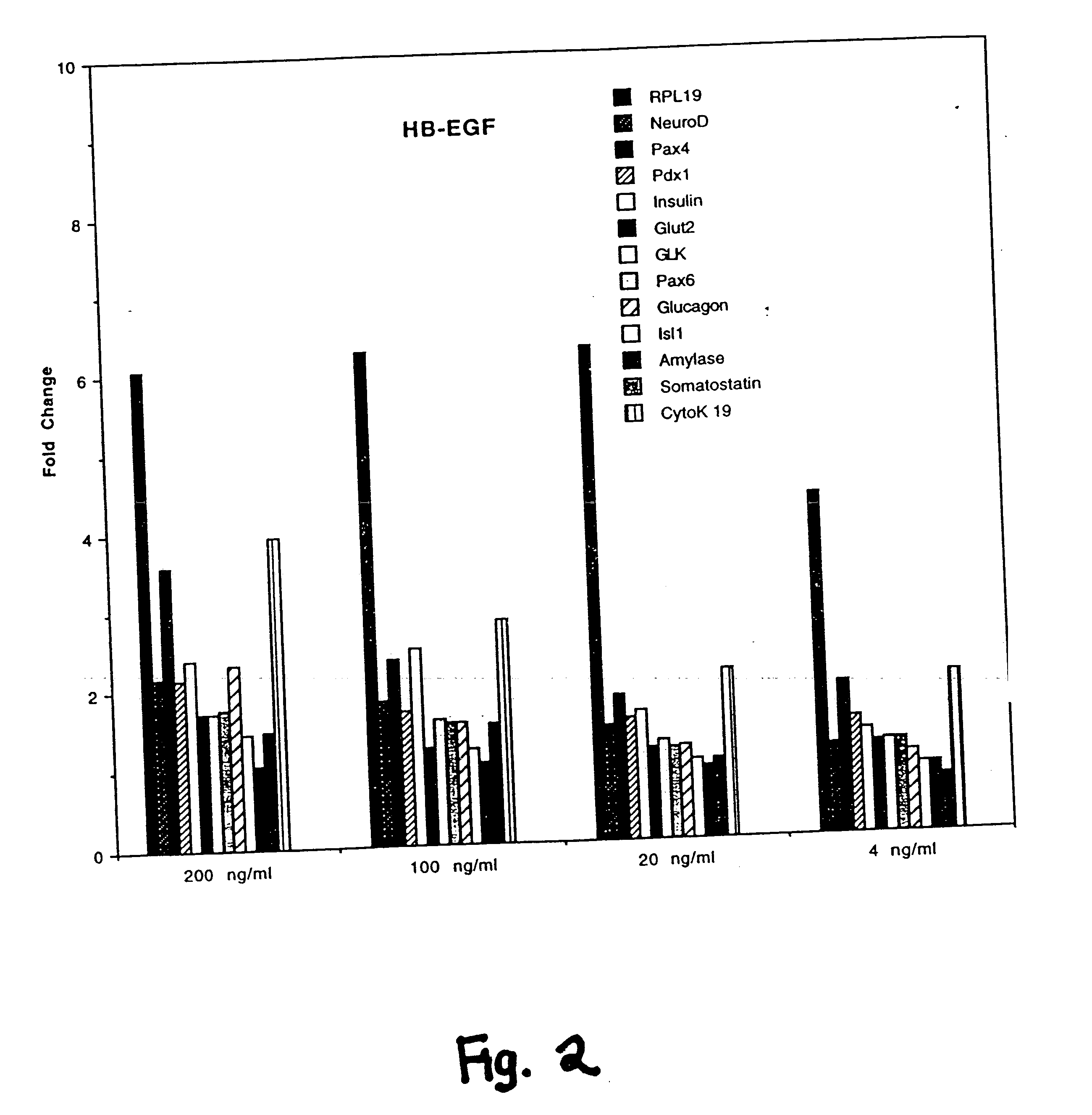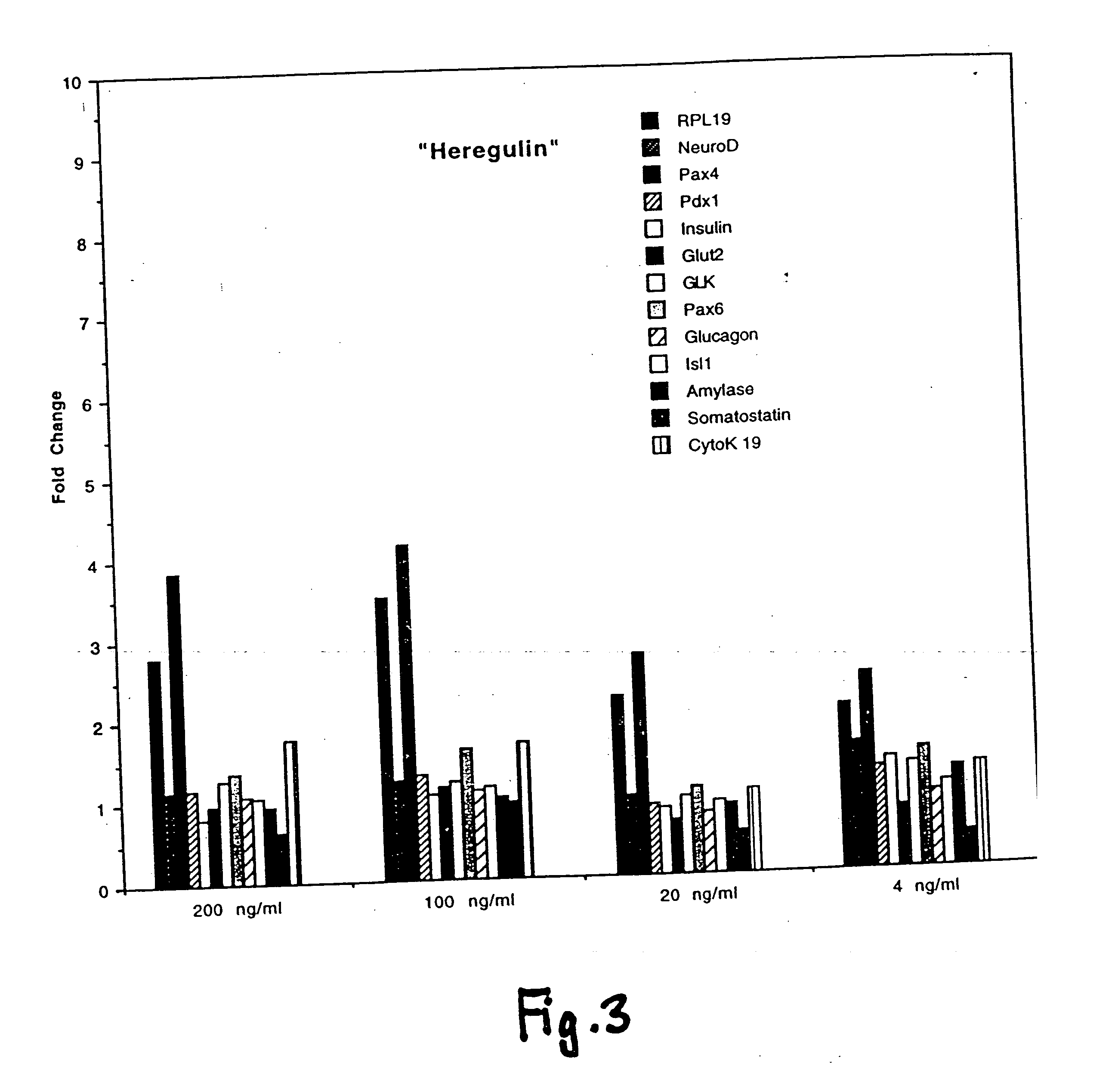Use of ErbB receptor ligands in treating diabetes
a technology of erbb receptor and ligand, which is applied in the field of erbb receptor ligands and erbb receptor antibodies, can solve the problems of serious pathological conditions, abnormally high glucose levels in the blood, and insufficient amount secreted for the mammal to maintain physiologically acceptable glucose levels
- Summary
- Abstract
- Description
- Claims
- Application Information
AI Technical Summary
Benefits of technology
Problems solved by technology
Method used
Image
Examples
example 1
[0232] Primary cultures of murine fetal pancreatic cells were assayed with various ErbB ligands and the expression of various markers or insulin was examined.
[0233] Pancreata were dissected from e14 embryos of CD1 mice (Charles River Laboratories). The pancreata were then digested with 1.37 mg / ml collogenase / dispase (Boehringer Mannheim) in F12 / DMEM (Gibco) at 37° C. for 40 to 60 minutes. Following the incubation, the digestion was neutralized with an equal volume of 5% BSA, and then the cells were washed once with RPMI1640 (Gibco).
[0234] On Day 1, the cells were seeded into 12-well tissue culture plates that had been precoated with 20 microgram / ml laminin (Boehringer Mannheim) in PBS. Cells from the pancreata of 1-2 embryos were distributed per each well in primary culture medium (RPMI1640 containing 10 microgram / ml rhInsulin (Genentech, Inc.), 50 microgram / ml aprotinin (Boehringer Mannheim), 60 microgram / ml bovine pituitary extract (BPE) (Pel-Freeze), 100 ng / ml Gentamycin, at 1:...
example 2
[0239] Mice heterozygous (+ / −) for either heregulin, ErbB2 or ErbB3 were created by gene targeting techniques, resulting in the loss of one functional gene copy and an associated decrease in targeted protein. The in vivo activity of heregulin in the heterozygous mouse lines and in wild type mice (pregnant and non-pregnant) was then examined.
[0240] The chimeric mice were generated by gene targeting, described in Erickson et al., Development 124:4999-5011 (1997). The mice were mated on C57BL / 6J and Balb / C mouse strains with no differences noted in heregulin response based on background strain or backcross level. Adult 8-12 week old mice of each genotype, with an average weight of 20 g each, were treated with a sustained 14 day systemic delivery of recombinant human heregulin-beta1 (amino acids 177-244) using ALZA pumps. [Holmes et al., Science 256:1205-1210 (1992)]. Genotypic groups receiving the heregulin consisted of 6 females and 6 males each. Control groups for each genotype (2 f...
PUM
| Property | Measurement | Unit |
|---|---|---|
| time | aaaaa | aaaaa |
| concentrations | aaaaa | aaaaa |
| concentrations | aaaaa | aaaaa |
Abstract
Description
Claims
Application Information
 Login to View More
Login to View More - R&D
- Intellectual Property
- Life Sciences
- Materials
- Tech Scout
- Unparalleled Data Quality
- Higher Quality Content
- 60% Fewer Hallucinations
Browse by: Latest US Patents, China's latest patents, Technical Efficacy Thesaurus, Application Domain, Technology Topic, Popular Technical Reports.
© 2025 PatSnap. All rights reserved.Legal|Privacy policy|Modern Slavery Act Transparency Statement|Sitemap|About US| Contact US: help@patsnap.com



